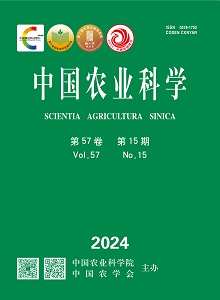Suckling Behaviour of Piglets Affected by Body Weight and Sex
引用次数: 0
Abstract
Piglet suckling behaviour has been extensively studied, but surprisingly, there are not many studies that specifically consider body weight and sex in this context. These two basic individual characteristics have been considered more as supporting data but not as main factors. Therefore, the objective of the present research was to examine the effect body weight on suckling behaviour of piglets during lactation separately by sex. The study comprised 14 litters with a total of 158 piglets (85 male, 73 female, litter size 6−15 piglets). Suckling behaviour was described in terms of suckling position (the teat at which the piglet suckled during suckling), suckling territory (the range two outermost suckling positions of the piglet encompasses) and sucklingstability (the tendency to suckle successively at the same position), and was observed in six periods: 0−3, 4−7, 8−10, 11−14, 15−21 and 22−32 days of age. In each period, piglets were also weighed. The udder was divided into three areas: anterior (1st-2nd teat pair), middle (3rd-5th teat pair) and posterior (6th-8th teat pair). Body weight affected suckling behaviour differently in male and female piglets (i.e., all traits in females, suckling stability only in males). The relative body weight of females decreased significantly from the anterior towards the posterior part. Heavy females (but not males) suckled considerably more frequently on the anterior area. Heavier piglets (male and female) established more stable suckling order. Suckling territory of males was quite large, but did not differ among body weight classes. Interestingly, light females visited significantly larger suckling territory than heavy females. The present results fill a gap in the otherwise broad knowledge of pig suckling behaviour, which is of great importance for litter management during lactation, especially when cross-fostering is implemented. In this context, knowledge of the detailed role of sex and body weight is of particular importance because breeders rely mainly on basic body traits when managing litters.体重和性别对仔猪哺乳行为的影响
人们对仔猪的哺乳行为进行了广泛的研究,但令人惊讶的是,在这种情况下,专门考虑体重和性别的研究并不多。这两个基本的个体特征更多地被认为是支持数据,而不是主要因素。因此,本研究的目的是研究哺乳期间体重对不同性别仔猪哺乳行为的影响。试验共14窝158头仔猪(公猪85头,母猪73头,窝次6 ~ 15头)。哺乳行为是根据哺乳位置(仔猪在哺乳过程中哺乳的乳头)、哺乳范围(仔猪最外侧两个哺乳位置所包含的范围)和哺乳稳定性(在同一位置连续哺乳的趋势)来描述的,并在6个时期进行观察:0 - 3、4 - 7、8 - 10、11 - 14、15 - 21和22 - 32日龄。在每个时期,仔猪也称重。乳房分为三个区域:前(1 -2乳头对)、中(3 -5乳头对)和后(6 -8乳头对)。体重对公母仔猪哺乳行为的影响是不同的(即对母仔猪的所有性状都有影响,对公仔猪的哺乳稳定性有影响)。雌鱼的相对体重由前向后显著降低。体重较重的雌性(而不是雄性)更频繁地在前部哺乳。体重较重的仔猪(公母)建立了更稳定的哺乳秩序。雄性的哺乳区域相当大,但在体重等级之间没有差异。有趣的是,体重轻的雌性比体重重的雌性访问了更大的哺乳区域。目前的结果填补了对猪哺乳行为的广泛知识的空白,这对哺乳期间的产仔管理非常重要,特别是在实施交叉饲养时。在这种情况下,性别和体重的详细作用的知识是特别重要的,因为育种者主要依靠基本的身体特征来管理幼崽。
本文章由计算机程序翻译,如有差异,请以英文原文为准。
求助全文
约1分钟内获得全文
求助全文
来源期刊

中国农业科学
Agricultural and Biological Sciences-Agricultural and Biological Sciences (all)
CiteScore
1.90
自引率
0.00%
发文量
17516
期刊介绍:
Chinese Agricultural Science is a comprehensive, academic journal co-sponsored by the Chinese Academy of Agricultural Sciences and the Chinese Society of Agriculture. Founded in 1960, the journal is published publicly in the form of a bimonthly magazine. The contents of the journal include crop genetic breeding, cultivation, plant protection, soil fertiliser, horticulture, food science and engineering, animal husbandry and veterinary medicine, etc. It aims to promote the sustainable development of high-yield, high-quality, high-efficiency and environmentally friendly agriculture and animal husbandry.
The aim of the journal is to report on the scientific research results of agriculture and animal husbandry in China, to enhance the innovation capacity of agricultural science and technology, to promote academic exchanges at home and abroad, and to serve the development of modern agricultural science and technology and scientific and technological progress. In addition, Chinese Agricultural Science is included in several international retrieval systems, including American Chemical Abstracts CA, Scopus, GeoBase, Russian Journal of Abstracts, CABI (Centre for Agricultural and Biological Information International) of the United Kingdom, and AGRIS (Food and Agriculture Organization of the United Nations).
 求助内容:
求助内容: 应助结果提醒方式:
应助结果提醒方式:


